Session 3: Offshore Wind Development in India: Bolstering India’s Energy Security
Global Wind Day Celebration
Objectives:
Offshore wind development in India holds tremendous promise for bolstering the nation’s energy security and advancing its renewable energy goals. With a vast coastline spanning over 7,500+ kilometers, India possesses significant offshore wind energy potential, estimated at 70+ gigawatts (GW) at the coasts of Gujarat and Tamil Nadu. The World Bank Studies has estimated Indian offshore wind potential at 174+GW which includes both fixed and floating foundation technology. Various technical assistance (TA) programs of bilateral and multi-lateral agencies have extensively contributed to enriching the offshore wind understanding and commercialization in India.
The session will explore the global offshore wind developments, best practices adopted by matured offshore wind markets, and learnings for India, and discuss the preparedness of India to start investments in this upcoming sector. The session will also delve into the key enablers and inhibitors for offshore wind power growth and policy, and the regulatory landscape for the Indian market. The offtake of offshore wind power and the benefits for the Indian power system, its contributions to the long-term energy mix, bolstering energy security, and Net Zero-2070 targets shall be the key objectives for discussion of the session.
Speakers Detail
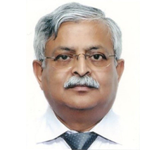 Moderator Moderator
Dr. Biswajit Roy,
Director General, Gujarat Energy Research & Management Institute (GERMI) |
 Panellist Panellist
Smt Mamta Verma,
Secretary, Energy and Petroleum Dept., Govt of Gujara |
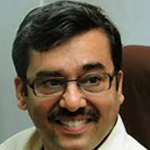 Panellist Panellist
Shri Thiru Rajesh Lakhoni
CMD, TANGEDCO |
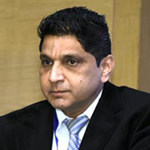 Panellist Panellist
Dr. Rajesh Katyal, Director General, NIWE |
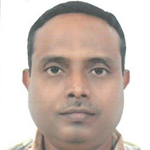 Panellist Panellist
Shri Subir Sen, ED PGCILMail id: |
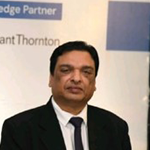 Panellist Panellist
Shri Rajiv Gupta, CEO, NTPC |
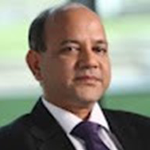 Panellist Panellist
Shri. Ishwar Chand Mangal, CEO, Suzlon |
 Panellist Panellist
Shri Alp Gunsuver, CoE, Danish energy Agency |
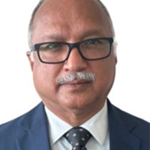 Panellist Panellist
Shri. Harsh Nupur Joshi, Head, Renewables, ONGC |
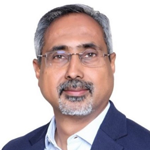 Panellist Panellist
Shri. Akash Passey, President, ZF India |
|
|
Moderator:
- Dr. Biswajit Roy, Director General, Gujarat Energy Research and Management Institute (GERMI)
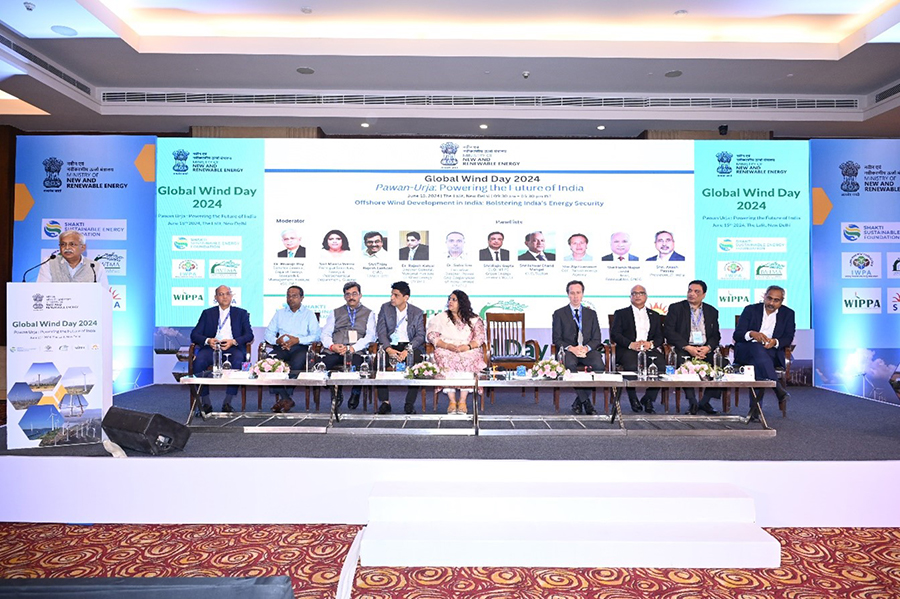
Dr. Rajesh Katyal, in his presentation, highlighted the current study done by NIWE in the advancement of offshore wind energy plants. He added:
- Highlighted ongoing geotechnical and geophysical studies, supported by the Ministry of Defense, to ensure soil suitability for monopile or other pile designs.
- Offshore wind turbines can help manage peak load demands in Tamil Nadu and Puducherry.
- Maximum wind speeds occur from 3-4 PM to midnight, aligning with peak load times.
- Predominant wind directions are Northeast (December to April) and Southwest (April onwards), necessitating turbine alignment perpendicular to these directions for maximum power capture.
- Renewable Energy Project in Rameshwaram:
- Plan to install 8 MW class offshore turbines and 1 MW of solar power.
- Aiming to meet 80% of Rameshwaram’s 82 MW load demand with renewables.
- Environmental Impact Assessments:
- Rapid and dynamic impact assessment studies completed with UK support.
- Sampling conducted at various distances to ensure environmental compliance.
- Offshore Turbine Specifications:
- Installation of 15 MW offshore turbines with rotor diameters of 230-250 meters.
- The initial phase includes 33 turbines, totaling up to 495 MW.
- Collaboration with Denmark’s team for advancement and conceptual Design. Design prepared for a 500 MW offshore substation project in Tamil Nadu.
- Future Developments and Studies:
- Further studies to fine-tune designs based on developer inputs.
- Ensuring offshore substation and cable installations meet all regulatory standards.

Dr. Biswajit Roy asked about the potential challenges for offshore wind in India.
Smt. Mamta Verma, Principal Secretary, EPD, Gujarat:
- Identified wind variability and seasonal wind changes as factors to consider for project offtake.
- Highlighted technical challenges, particularly offshore cable laying, as major hurdles in developing offshore wind.

Dr. Subir Sen, Executive Director, PGCIL:
- Emphasized the importance of transmission in offshore wind development.
- Suggested developing an offshore evacuation model.
- Noted that undersea cables will need to be imported from the international market for the initial phase of offshore wind development.
Shri Rajiv Gupta, CEO, NTPC Green Energy Limited (NGEL):
- Offshore wind projects enhance energy security by diversifying energy sources and reducing reliance on imported fossil fuels, which are subject to geopolitical uncertainties and price volatility.
- Ensuring a reasonable Levelized Cost of Energy (LCOE) is crucial for making offshore wind projects attractive to developers, investors, and policymakers, thus fostering sustainable energy transitions.
Shri Ishwar Chand Mangal, CEO, Suzlon:
- Suggested that seabed surveys should be conducted by NIWE & MNRE due to the high cost and risk involved for project developers.
- Stressed the need for early development of port and transmission infrastructure to assure developers regarding project offtake.
- Recommended that the Viability Gap Funding (VGF) scheme be applicable on a broader scale, not just for 1 GW projects.
- Called for the removal of GST and the adoption of a Contracts for Difference (CfD) mechanism to support developers and increase bankability.
- Proposed that insurance for equipment should be handled by Indian players, currently managed by international players, to support the Indian market.
- Emphasized maximizing Indian manufacturing.
Shri Alp Gunsuver, CoE, DEA:
- Highlighted Denmark’s success with the Contracts for Difference (CfD) mechanism in offshore wind projects.
- Noted that CfDs, whether one-way or two-way, are crucial for enticing developers to invest in offshore wind projects, especially in their early stages.
- Stated that offshore wind projects often face higher initial LCOE compared to onshore sources, making CfDs essential for providing financial certainty.
- Governments can reduce risks in the initial phase of offshore wind development by supporting developers with surveys, studies, and other forms of assistance.
- Denmark’s experience underscores the importance of effective policy measures and supportive frameworks in fostering a thriving offshore wind industry globally.
Shri Akash Passey, President, ZF India:
- As an innovator in wind energy, ZF Wind Power focuses on the future by prioritizing validation in new product and service development.
- Established an industry-leading Test & Prototype Centre with a 30 MW back-to-back test rig for rigorous validation of next-generation wind turbine powertrains under dynamic conditions.
- This initiative accelerates the transformation of the global energy system towards sustainability, showcasing ZF’s dedication to its partners and belief in wind power as a pivotal renewable energy source.
- Aims to empower a sustainable future, driving progress towards a cleaner and more resilient energy landscape.
Shri Harsh Nupur Joshi, Head, Renewables, ONGC:
- Highlighted India’s vast potential exceeding 70+ GW in offshore wind energy, particularly off the coasts of Gujarat and Tamil Nadu.
- Noted that the global installed capacity of offshore wind is approximately 75 GW, with an additional 18 GW anticipated by the end of FY 24.
- Projected that total offshore wind capacity will grow tenfold by 2040, indicating a significant global shift towards this renewable energy source.
- The Ministry of New and Renewable Energy (MNRE) and the National Institute of Wind Energy (NIWE) have spearheaded numerous initiatives to advance offshore wind development within India.
- Stakeholders including policymakers, developers, original equipment manufacturers (OEMs), and the broader industry are eagerly poised to position India prominently on the global offshore wind energy map.
- ONGC, leveraging its proven track record and extensive offshore expertise, stands as a pivotal player with a definitive edge in this transformative sector.
 Moderator
Moderator Panellist
Panellist Panellist
Panellist Panellist
Panellist Panellist
Panellist Panellist
Panellist Panellist
Panellist Panellist
Panellist Panellist
Panellist Panellist
Panellist

